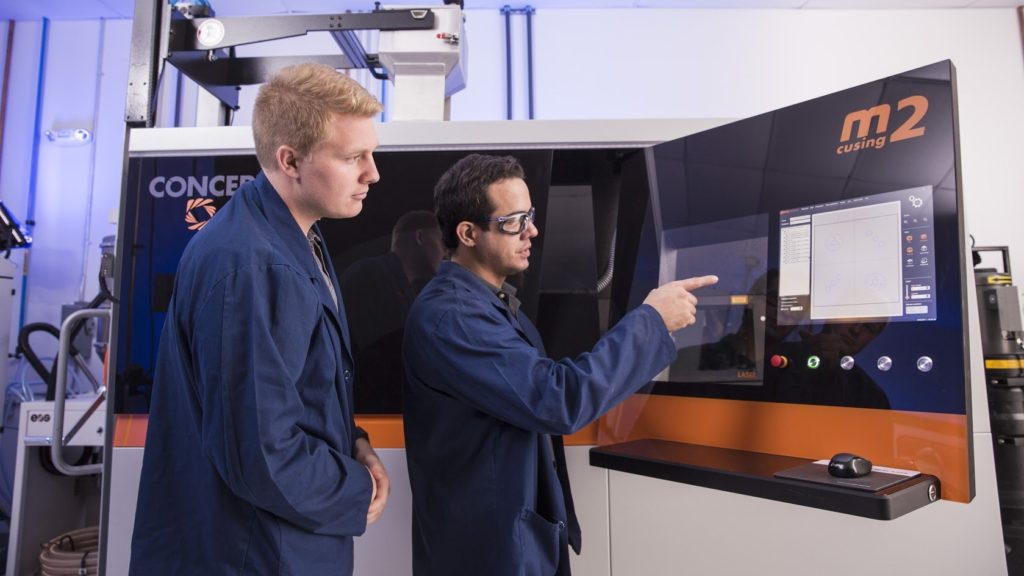In the process of re-using powder for metal 3D printing, splattered metal, known as powder condensate, must be sieved out and disposed of. Now, the Additive Manufacturing Green Trade Association (AMGTA) has created a report outlining a new method from Sintavia and KBM Advanced Materials for rendering the material safe for transport and recycling. As a result, this waste can be shipped without polluting the ecosystem and then converted into new metal feedstock.
Out with the Old
Among its activities, AMGTA researches additive manufacturing (AM) practices to understand and improve its sustainability. Within this purview, 3D printing service bureau Sintavia examined its metal powder bed fusion (PBF) operations to minimize adverse environmental effects, specifically pollution from powder condensate.
First of all, the solidified particles from metal alloy evaporation during the PBF process result in an additional waste stream. In order to keep limit the changes that the material might ignite, Sintavia mixes it with silicon oil and sand, thus passivating it. However, this makes it economically unfeasible to recover the metal powder and renders transportation dangerous.
In with the New
For this reason, Sintavia turned to a resin developed by KBM, which turns waste into a non-hazardous mixture that is easy to transport. The mixture reduces danger during transportation and improves the powder condensate’s recyclability.
The AMGTA created the passivation report to determine the sustainability levels of metal production and transportation, educating manufacturers on ways to reduce powder condensate pollution. This includes the collection of soot and material waste from passivation for processing.
The circular economy shrinks the gap between material mining and product manufacturing. It relies on recycled goods to reduce transportation emissions and ecosystem disruption. Minimizing pollution prevents climate change effects and environmental exploitation.
When Will KBM’s Material Hit the Market?
The passivation technology currently has a pending patent. The team expects the technology to transition out of the testing phase soon. Sintavia’s waste reduction technology may significantly improve manufacturing sustainability.
Subscribe to Our Email Newsletter
Stay up-to-date on all the latest news from the 3D printing industry and receive information and offers from third party vendors.
Print Services
Upload your 3D Models and get them printed quickly and efficiently.
You May Also Like
America Makes Launches $1.7M Project Call to Train & Qualify AM Suppliers for Defense at MMX 2025
America Makes has announced a new funding opportunity to strengthen the U.S. defense supply chain through additive manufacturing (AM). Backed by $1.7 million from the Department of Defense (DoD), the...
3D Printing News Briefs, July 23, 2025: ASTM Standard, Defense, Bioinks, & More
We’re starting with business news in today’s 3D Printing News Briefs, as Nikon AM Synergy has appointed a new CEO. Moving on, a proposed ASTM International standard will support 3D...
New Frontier Aerospace Wields Mjölnir, a 3D Printed Engine for Hypersonic Flight
In less than five years, startup New Frontier Aerospace (NFA) has successfully tested a new kind of rocket engine that could make spaceflight cleaner, faster, and more reusable. In June...
3D Printing News Briefs, June 28, 2025: Defense Accelerator, Surgical Models, & More
In this weekend’s 3D Printing News Briefs, 3YOURMIND was selected to join an EU Defense Accelerator, and PTC has announced model-based definition (MBD) capabilities within Onshape. Finally, a study out...






























